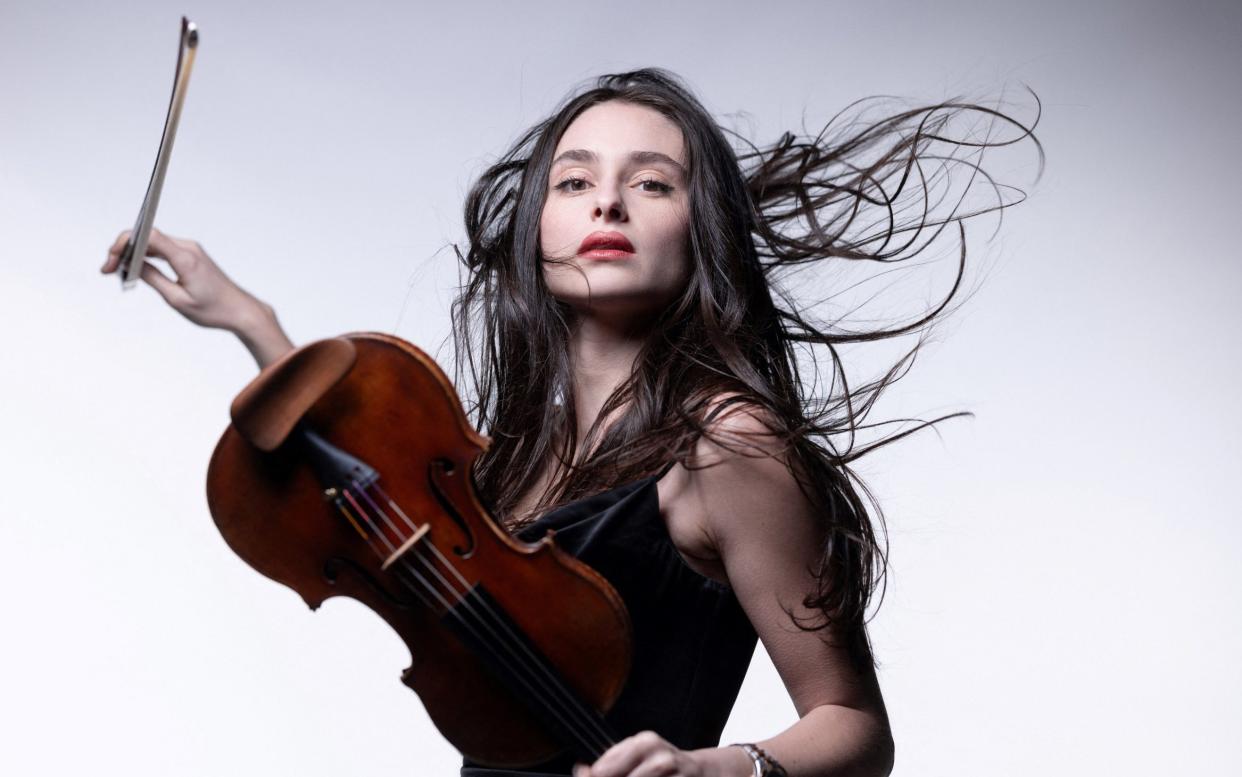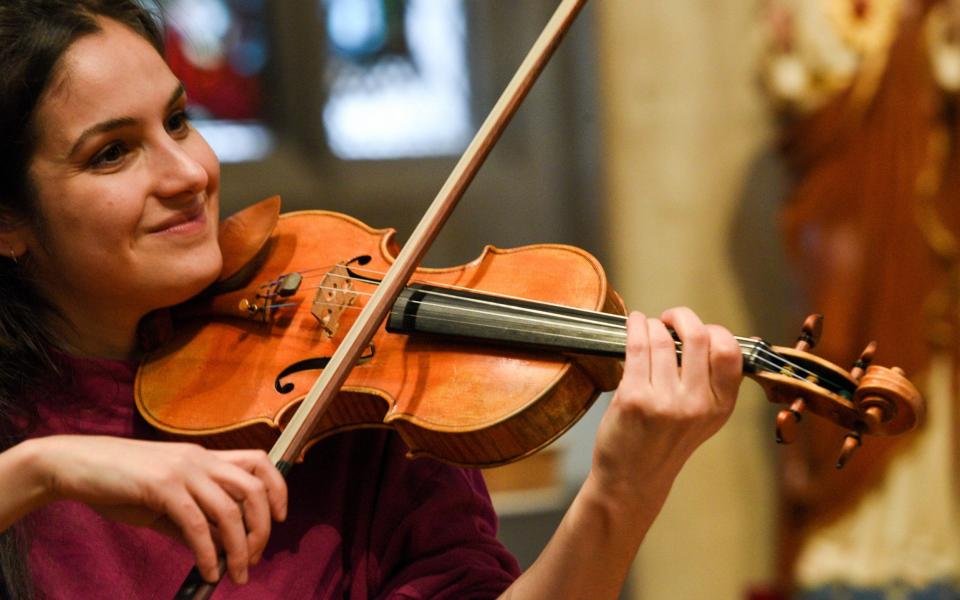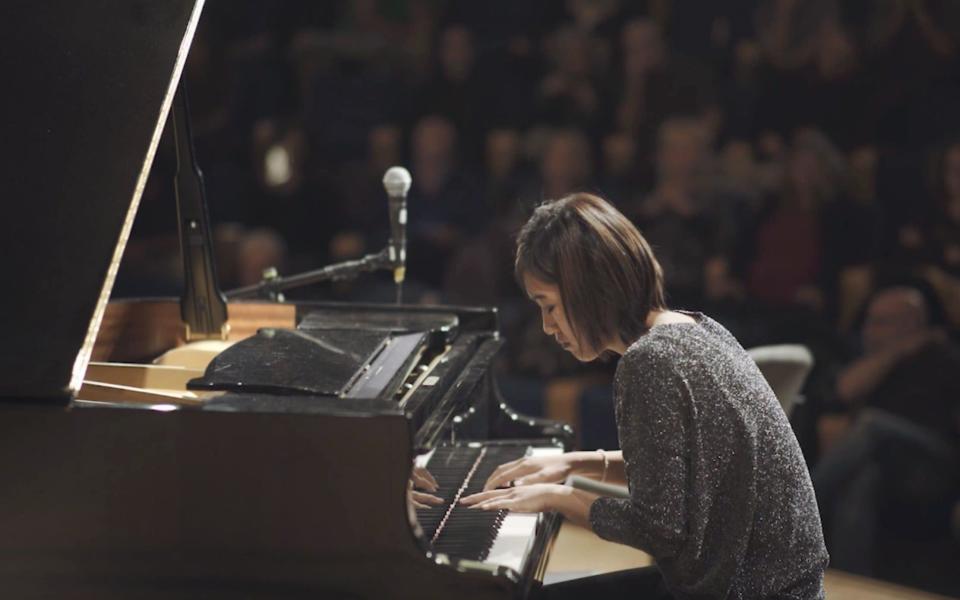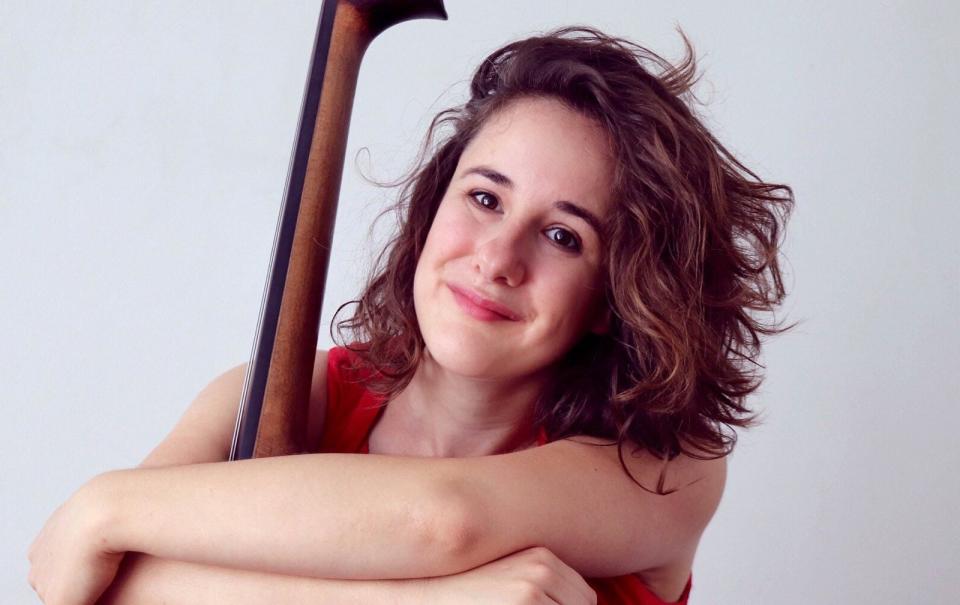Why TikTok could be the future of classical music

You’d be forgiven for not realising that one of the foremost indie singer-songwriters of our time also has a ballet score to his name.
Though many best know American Sufjan Stevens for the sparse indie folk instrumentation of his 2015 album Carrie & Lowell, he also wrote the score for 2019 ballet Reflections, from New York City Ballet choreographer Justin Peck. Written for two pianos and eleven dancers, it’s energetic, dynamic, and explosive – a change from the artist’s often more contained sound world.
It’s these kinds of unexpected connections and contrasts between pop culture and classical music that seasoned music marketer Daria Challah loves to draw out in her online classical music publication, Herbert Music. Herbert boasts a podcast, curated Spotify playlists for classical newbies, a blog, and to-camera videos across multiple social media platforms – but especially on TikTok, where users upload short videos set to music.
Challah wants to meet 25-35-year-olds where they are already – online, and engaging in other cultural forms: “I’m trying to show the pervasiveness of classical music”, she explains.
And she’s succeeding – Herbert boasts nearly 70,000 followers now, across all its social platforms. Challah’s prophecy for the classical world? “Social media is the first part – a lot more [is] coming.”
Could she be right? She’s one of a growing number of musicians, composers and academics using TikTok to present classical music anew – via a new digital, digestible medium.
They might have got the alchemy just right. As a Royal Philharmonic Orchestra (RPO) research study into orchestral music from February 2023 acknowledges, “so much about the future of orchestral music depends on young people and their relationship with the genre”. If classical music is dying, young people need to be the first to run for the defibrillator.
Young people are there on social media. And they’re listening. A fifth of under-18s want to see more classical music on social media, RPO’s research shows. 18-34-year-olds are six times more likely to follow classical organisations and artists on social media than over-55s. In 2021, a twentieth of 18-34-year-olds watched online videos of orchestral performances; in 2023, it’s an eighth.
And for a sense of scale, in February 2024, nearly 20% of the world’s population was on TikTok – just over 1.5 billion monthly active users. The writing is on the wall, and the future is clear: classical music will live – or die – on social media.
For instance, Esther Abrami, a 26-year-old Paris-based violinist, started posting on TikTok aged 19, sharing performance videos and funny, relaxed videos of her life as a musician – and hasn’t looked back.
When it comes to TikTok, Abrami is all-in: “Young people are on their phones all the time, that’s true, and people criticising that is not going to make it different, that’s the way things are, that’s the way that generation is, so you might as well make it worth their while, and share culture on there, and share things that they can learn.”
It is working – well. Abrami’s last concert in Paris, showcasing her 2023 film score covers album Cinema, sold out a month beforehand.
“What I do through social media is firstly create a new online audience, a community, and then turn that online audience, which is younger and more varied and more diverse, into an audience that is going to buy tickets”, Abrami explains.

And while arts funding is still crucial, “we also need to be able to have people coming and buying tickets and making money that way”, Abrami adds: “TikTok is doing a lot for that”.
Ellie Consta, another violinist, worked with Abrami on Her Ensemble, Consta’s string group addressing gender issues in the industry. Social media is simply a “tool” for promoting their work, Consta explains, so helpful it might soon be vying for a spot on the second desk: “I almost think it’s like an instrument!”
But there are detractors: “When TikTok first came out, in conversation with other colleagues, they said: ‘Oh yeah, it’s just for idiots.’”
A harsh verdict – especially when one of the main problems TikTok helps address, as Korean-American Nahre Sol explains, is simply that many people feel “not part of the club”. She shares music theory on TikTok – to the tune of 1.3 million likes.

Sol explains: “Going into an opera house is quite intense, even for me – there’s just a very formal atmosphere. The length of a concert, also, is just very long if you’re not used to it – it’s intense to sit there, very quietly, for 3-4 hours. You’re not sure how you’re supposed to behave, maybe how you’re supposed to dress.”
American community worker Seth David wishes that from that ivory tower, classical music might let down its hair – and believes TikTok videos, often filmed in a selfie format, can help: “People want to see something that looks like a FaceTime video... people like that human connection.”
David, who uses TikTok to teach music theory, is also not afraid to have fun with it. A recent video showcased a little ditty explaining major chords, itself composed entirely using major chords. It had one commenter saying: “This is the best account on the entire planet.” High praise indeed.
It’s easy to imagine, though, that among traditionalists, this might all cause a bit of sniffing and turning-up of noses. Anne-Gabrièle Douce, a UK-based French concert pianist and double bassist, though, believes there is a balance to be struck between quality and accessibility.
“People are smart enough”, Douce says – you just need to guide them: “Of course, there are certain pieces of music that you should not start with.”
“If you’ve never had alcohol in your life and you start with whisky, it’s a bit brutal. But always listening to Fur Elise by Beethoven would be like drinking cider your whole life!”, Douce laughs.
But, like anything, social media isn’t perfect, Douce explains: “If you play Bach, they will remove the video thinking you stole the piece from something else. Sometimes, they claim it comes from twelve different albums when you play Bach, and you have to dispute the twelve claims because the creators of the app don’t think about classical music. That’s how not included this music is. It’s insane.”

But TikTok is doing something: the numbers don’t lie. All TikToks are set to background music. It’s striking how many classical pieces are the fashionable choices, Seth David says: “How many people now can recognise Chopin’s Nocturne in E Flat Major and the Lacrimosa from Mozart’s Requiem? Specifically the Lacrimosa, you can play that in any group of kids and everybody will know what it is.”
David continues: “Let’s say now 100,000 people have seen this 30-second snippet, and out of those 100,000, how many people think: ‘I want to hear what the full song sounds like’? Even if it’s only 2,000, that’s still 2,000 more people who are now learning!”
No matter how people feel about TikTok, Dr Robert Anton Strobel, an American composer and composition teacher sharing his knowledge online, believes social media is somewhat of a runaway train – hop on, or get left behind: “How are you going to reach people? It’s not through flyers, although they’re nice, it’s not through anything else, it’s through social media, and there’s just no other way around it. It’s the future.”

 Yahoo News
Yahoo News 
